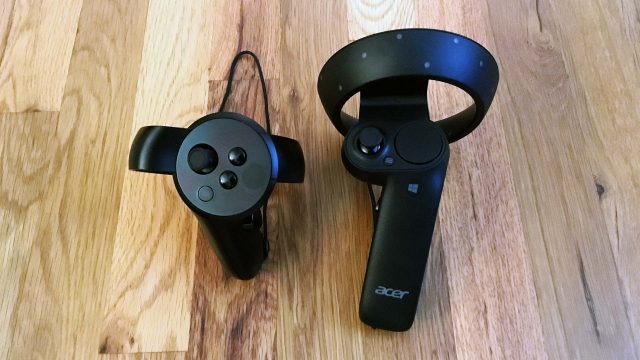
Microsoft announced this week that it plans to remove support for its entire WMR platform on Windows, which could make Windows VR headsets inoperable.
A Good Start
Microsoft was surprisingly quick to jump into the VR sphere back in 2017 when it helped a handful of PC makers build the first widely available PC VR headsets with inside-out tracking.
As part of that effort, the company also launched the ‘Windows Mixed Reality’ platform, which baked support for Windows VR headsets pretty deeply into the Windows operating system. For the most part, the Windows VR headsets were compatible with modern Windows installations right out of the box, including a fully-supported virtual desktop system that was in many ways ahead of its time.
Where Things Went Wrong
But for all the right moves Microsoft made in this venture, there were a lot of wrong moves too.
For one, the company made seemingly no effort to court VR developers onto its platform, leaving the Windows Mixed Reality app store practically barren compared to the VR content libraries of Meta (at the time Oculus) and Steam. That ultimately led to many (if not most) Windows VR headset users going straight to Steam for the bulk of their headset usage. That meant Steam was sucking up the vast majority of content-related revenue from Windows VR headsets, leaving Microsoft with little to show for their efforts.
While the Windows VR headsets were otherwise decent and affordable, a few critical pain points went unaddressed for far too long. Most notably were the bulky controllers shared by all Windows VR headsets which had an awkward input layout and worst-in-class tracking compared to contemporary headsets like the Oculus Rift and HTC Vive.

It wasn’t until 2020 that HP finally offered an improved alternative, and while it borrowed most of the best parts of the Oculus Touch controllers, it still had a bulky ring and relied on visible-light tracking.
Pulling the Plug on Windows Mixed Reality
Now, six years after Windows Mixed Reality and Windows VR headsets hit the market, Microsoft has announced that it’s pulling the plug on the platform.
Quietly noted in the latest Windows ‘Deprecated Features’ page, the company wrote that, “Windows Mixed Reality is deprecated and will be removed in a future release of Windows. This deprecation includes the Mixed Reality Portal app, and Windows Mixed Reality for SteamVR and Steam VR Beta.”
While Windows VR headsets are far from the most popular on the market today, we estimate there continues to be around 100,000 to 200,000 monthly-connected Windows VR headsets on Steam.
At this stage it’s clear that Microsoft is shelving its Windows Mixed Reality platform, but the details of how this will happen aren’t yet known. Specifically, we don’t know if Windows VR headsets will continue to work.
Windows Mixed Reality is baked into Windows as a module that can be installed and managed natively through the operating system. The Windows Mixed Reality for SteamVR plugin (which offers official compatibility between Windows VR headsets and SteamVR) is hosted for download on Steam.
Following the eventual ‘deprecation’, it isn’t clear if all Windows Mixed Reality features will be rendered inoperable, or if they are simply being removed from the metaphorical storefront.
It’s possible that those who have already installed the requisite software will continue to be able to use it. And it’s possible that Microsoft will make the packages available as separate downloads so that Windows VR headsets can continue to work, even if they are no longer being supported. But we just don’t know yet. We’ve reached out to Microsoft for clarity on the situation.
– – — – –
With Apple Vision Pro just around the corner, will the shuttering of Windows Mixed Reality go down as another ‘Zune moment’ for Microsoft?
This article was originally published on roadtovr